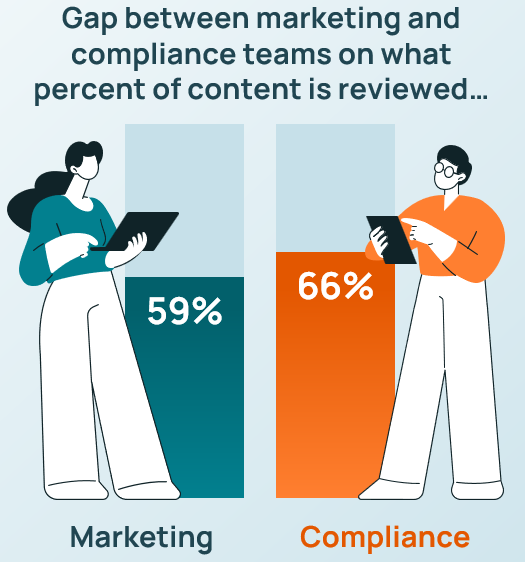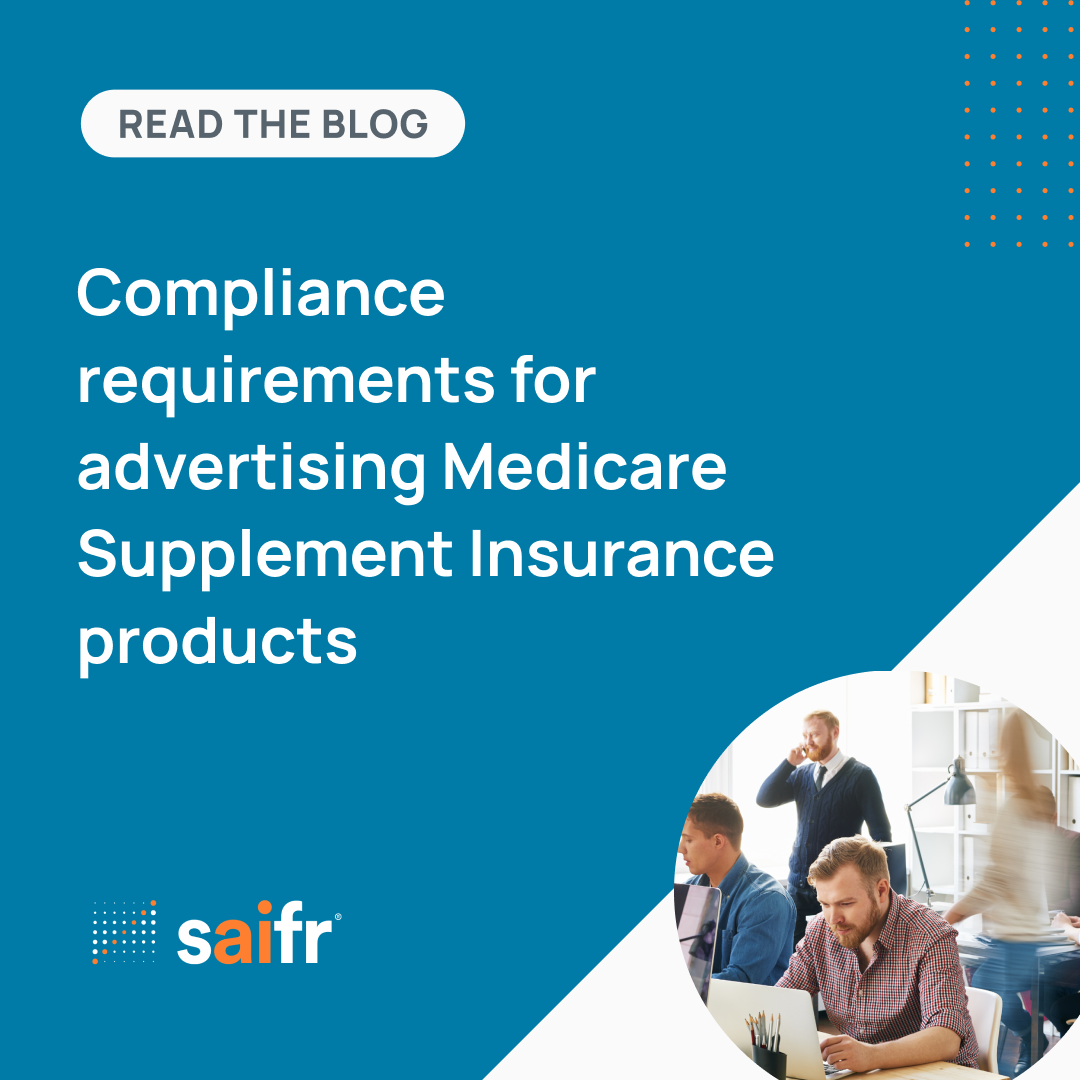In regulated industries such as financial services, risk and compliance teams are essential for ensuring fair and balanced communications that protect investors and ultimately safeguard markets. Often, compliance reviews are the last steps in the marketing process, with team members serving as gatekeepers between what marketing teams create and what gets released into the marketplace. But what do compliance professionals think about their roles and the content creation and approval process? What are their biggest bottlenecks? How do they view their collaboration with marketing teams?
We were interested in their perspectives, so to find out, we surveyed 59 risk and compliance leaders from U.S. financial firms. Respondents shared their views on a range of topics, including work volumes, workflows, and what they see as their biggest challenges.
“Compliance is typically viewed differently by different departments. For example, the legal and finance teams may consider compliance as a high priority, whereas the marketing and sales teams may see it as a potential impediment to their creative and inventive initiatives.”
--Junior Manager, Risk/Compliance, large firm
Workloads for risk and compliance teams are increasing
Studies show that the number of channels marketers use to reach customers and prospects grew sharply since the onset of the pandemic four years ago. According to a March 2023 survey of U.S. marketing leaders, 61% report using more marketing channels than before, with 77% of B2C leaders showing the largest increase in new channel use.
This expansion of channel options is creating a need for more marketing content, which in turn is creating more work for risk and compliance review teams. Our survey found that 61% of all risk and compliance teams are experiencing a significant increase in their overall volume of reviews. And stats are even higher when broken down by role and department size. Seventy-six percent (76%) of junior compliance officers are managing higher workloads, and 83% of teams who work within large departments say they are reporting higher volumes of work, as well. In fact, when we asked leaders what their top three content review challenges are, volume of reviews was tied for the top spot.
“In most instances, marketing sees compliance as a necessary guardian of the company's reputation.”
--Director/Senior Manager, Risk/Compliance, small firm
Heavier workloads are putting pressure on content development and review systems
People as well as processes may be struggling under heavier workloads. Leaders told us they are challenged by too many rounds of reviews. More than half (56%) said it takes their team four to five working days to review a piece of marketing content, and 39% said their team spends six to 10 days on marketing content review. Nearly two thirds of smaller compliance departments (61%) fall into that 6-to-10-day cycle.
Our leadership group said they are also challenged by the inability to track changes made during each review round and are finding it harder to prioritize task work.
To complicate matters, respondents said the systems their marketing and compliance teams are using to manage content reviews are not well integrated—or don’t exist at all. This disconnect can slow workflows, creating inefficiencies and preventing teams from collaborating effectively.
“Other departments may view compliance as a necessary but sometimes restrictive aspect of operations, balancing it with their goals.”
--Director/Senior Manager, Risk/Compliance, mid-sized firm
Knowledge gaps are evident between compliance and marketing
The disconnect between systems may be at the heart of other inconsistencies between marketing and compliance teams. Curiously, when we asked both marketing and compliance leadership what percentage of developed content gets reviewed, compliance leaders said they review approximately 66% of all marketing content, while marketing said only 59% of content created is routed through compliance.

Leaders gave us different answers regarding the number of required rounds of review, as well. We asked how many rounds of review, on average, does it take to create compliant content. Once again, the discrepancies in response were surprising. Compliance leaders say it takes an average of three or four rounds of reviews to ensure compliant content, while marketing leaders claim the average is anywhere from six rounds to 10 rounds in large departments.
Why is the data so far apart? Again, siloed systems, an absence of internal systems, or content management systems that lack visibility into collaborative workstreams may be preventing team members from having a full view and understanding of compliance workflows.
Where the two teams are more aligned is on the average amount of time it takes compliance teams to review each piece of content, which is about six to seven days.
“Compliance-related training and education may elicit varied reactions among marketing departments. While some team members may consider it as a way to stay informed and make educated decisions, others may see it as an additional task or constraint on their work.”
--Director/Senior Manager, Risk/Compliance, large firm
The good news: resources are available
One encouraging statistic that surfaced in our survey is compliance leaders are getting C-suite support in response to growing workloads. Of the leadership who reported an uptick in work, 94% said more resources are available to them. The survey data did not collect specifics on the types of resources (e.g., people, technologies, etc.), but the fact that organizations are recognizing and responding to the pressures compliance teams are working under is encouraging.
Also encouraging is the growing availability of smart platforms that can help compliance teams prioritize and manage their work, while providing visibility into planned, in-progress, and completed assignments. These platforms, built with machine learning and workflow management capabilities, provide an operational backbone that can help compliance leaders collaborate with multiple teams and work more efficiently.
“From a financial standpoint, compliance is crucial for risk management and financial stability. It's seen as a safeguard against potential penalties and lawsuits, ensuring our operations are in line with industry regulations and financial best practices. Adhering to compliance standards also contributes to investor confidence and financial transparency.
--Junior Manager, Risk/Compliance, mid-sized firm
Hear more from compliance leaders
All of the leaders we surveyed said they feel their peers in other departments have a mostly positive view of risk assessment and compliance activities. They respect the rules and regulations that risk assessment and compliance teams adhere to and understand that internal review helps ensure that the firm is meeting their legal and ethical responsibilities.
Read more on this topic, and get additional data and perspectives on financial services compliance in our ebook, The struggle is real: Overcoming hurdles in content creation and review.
1139587.1.0


-1.png)



